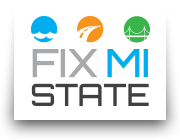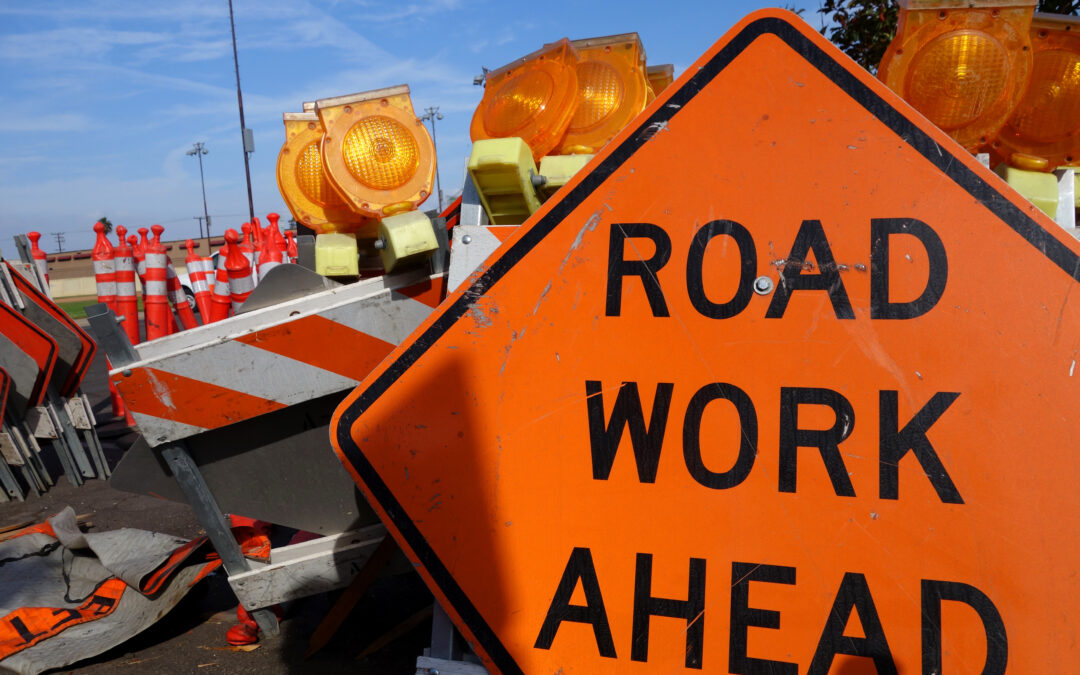This story originally appeared in MLive. Read more here.
Michigan roads and bridges are getting a significant financial boost after years of underfunding and political promises to prioritize long-term solutions.
Lawmakers green-lit revenue changes early Friday morning, Oct. 3, that are expected to direct about $1.1 billion in new revenue to the transportation budget for Fiscal Year 2026.
Eventually, transportation revenue stream changes adopted as part of budget negotiations could generate more than $1.8 billion annually, according to the Senate Fiscal Agency.
Ed Noyola, chief deputy director for the Michigan County Road Association (CRA), called the state’s new road funding package its largest increase in transportation funding in his nearly 50 years in the industry.
“This is monumental and everyone should pat themselves on the back for getting this done,” he said.
The Michigan House and Senate reached an agreement on a more than $75 billion budget for FY2026, which began Oct. 1. It included $51.8 billion in general government spending and $24.1 billion for education.
Gov. Gretchen Whitmer still needs to sign the agreement to make it official. She was part of the negotiation process alongside House Speaker Matt Hall, R-Richland Township and Senate Majority Leader Winnie Brinks, D-Grand Rapids.
Here’s a closer look at the budget as it relates to Michigan transportation and what comes next.
Where’s the money coming from?
The two major new revenue streams for Michigan’s transportation fund come from a shift of tax dollars paid at the fuel pump and a 24% wholesale tax on marijuana.
In 2025, Michigan drivers pay 70.4 cents per gallon of fuel between the state gas tax (31 cents), federal gas tax (18.4 cents) and state sales tax (6%, which is roughly 21 cents).
Rather than increase those taxes, lawmakers agreed to replace the state sales tax paid at the pump with an equal increase of the gas tax. That means more revenue for roads without drivers paying more tax.
The Legislature also passed a new wholesale tax on marijuana. It will take effect on Jan. 1, 2026, and is expected to generate $420 million per year.
The additional tax is on top of the existing 10% excise tax on retail sales. The cannabis industry opposed the tax, raising concerns that it will cripple small businesses and increase prices for customers.
A third component of revenue for roads is the Corporate Income Tax.
The spending plan shifts about $688 million in corporate income tax revenue to roads, which will counter a rerouting of $600 million in income tax revenue away from roads for a net gain of $88 million.
Prioritizing local roads
About 66% of federal-aid eligible roads under county control in Michigan are in good or fair condition, which falls short of the state’s 90% goal. Meanwhile, 46% of local roads (non-federal-aid eligible) are good or fair.
Getting more funding to local roads has been a priority shared by Whitmer and Hall throughout the negotiation process. The road funding package accomplished that goal.
For FY2026, about $456.7 million in additional funding will go to the counties, and 246.1 million more will go to cities and villages. State trunklines are expected to get about $179.7 million more.
Noyola said those funds will be critical to addressing deteriorating roads.
A big boost for bridges
Michigan has a $1 billion bridge repair backlog. At least 72 county-owned bridges have closed due to safety concerns, and another 332 were in critical or serious condition as of this summer, according to CRA.
The CRA has had $50 million annually to distribute to county road agencies via the Local Bridge Program. However, it said it received $400 million in funding requests this year alone, even with a three-applications-per-county limit.
Noyola said the budget agreement will put an additional $100 million into the Local Bridge Program annually, allowing road agencies to tackle more dilapidated bridges and begin reducing the backlog as soon as 2026.
“We’re extremely excited about taking a good crack at that list of serious and weight-restricted bridges,” Noyola said.
Lawmakers also created an “Infrastructure Project Authority Fund” with $65 million annually for projects to develop, expand or enhance new transportation services.
“By strengthening and expanding public transit, we’re opening doors to opportunity, building more connected communities and creating a state where everyone can thrive,” said Harmony Lloyd, MPTA president, in a statement.
“Even in the Motor City, driving shouldn’t determine your destiny,” said Megan Owens, executive director of Transportation Riders United. “Now let’s keep it going. To ensure everyone has reliable, convenient transit, legislators and local leaders must build on this momentum and commit to sustained, equitable funding that truly meets the needs of seniors, students, workers and people with disabilities across the state.”
Lawmakers earmarked $7.65 million for studying and implementing a program to evaluate the possibility of charging a per-mile fee on drivers.
Proponents say it’s a more equitable system because it accounts for more fuel-efficient and alternative-fuel vehicles that may not be options for all residents.
County road officials have supported a pay-per-mile study, given the rise in fuel-efficient vehicles has been associated with declines in fuel tax revenue.
What’s not included?
The final road funding numbers agreed upon by the Legislature were significant in that they surpassed $1 billion. However, they came in short of the more than $3 billion proposed by both Whitmer and the House Republicans earlier this year.
When a culvert needs replacing, it typically needs to be rebuilt larger to account for environmental changes and safety standards. Once a culvert reaches 20 feet, it needs to become a bridge — a transition the state has made about 150 times in the last four years.
“You’re talking maybe quadrupling the cost of that fixture,” he said. “There is no identified funding source for dealing with that.”
The annual process of agreeing on a state budget to allocate dollars for schools, state departments, local governments and more is usually completed by July 1, the statutory deadline to pass a budget.

